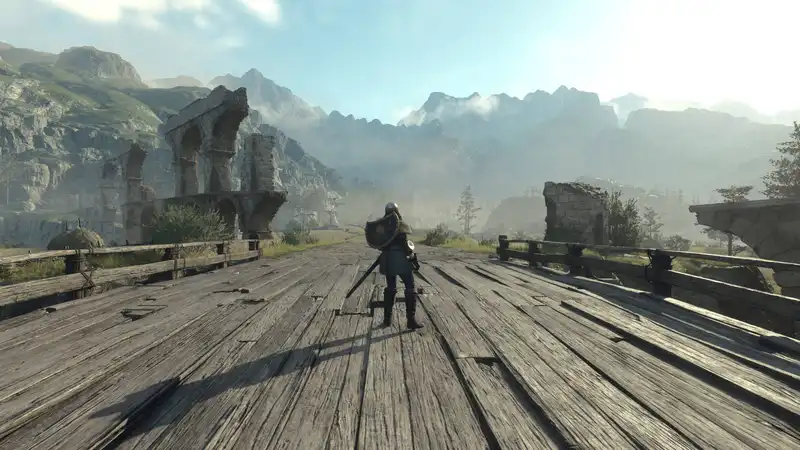Unless you have deliberately ignored the news surrounding Dragon's Dogma 2, you will not have missed the fact that the game performs somewhat poorly. While the main city is mostly CPU-limited, the open world is quite demanding on the graphics card and requires a handy boost from upscaling and frame generation. The former is already included in the game, but where to find the latter, especially the DLSS 3 files for frame generation, is in the installation folder.
And that's not even the old initial release of DLSS. It's actually the latest 3.5 version (specifically 3.5.10), although it's been running since last October; the same goes for the DLSS super-resolution upscaling files and the delay-reducing Reflex, so it's clear that Capcom is implementing the full DLSS 3.5 package in Dragon's Dogma 2 It is
AMD does not use external dll files for FSR 3, the upscaling and frame generation system, but this is part of the game. At least the upscaling does, but like Nvidia's AI-powered frame interpolation, there is no sign of an AMD version in DD2.
It is unclear why neither system is present in the Dragon's Dogma 2 review sample I examined for performance. Capcom may have been aware of the fact that the game would struggle to perform well above 30 fps on lower-performance hardware.
However, "Dragon's Dogma 2" is not the type of game where you just shoot, even during the most frenetic combat. Neither the characters nor the camera move particularly quickly, so if everything feels a bit laggy with the frame generator enabled, it won't be much of a problem; it would certainly benefit from a more powerful gaming PC that can run the game consistently enough at 60 fps (urban areas are (urban areas notwithstanding). [It's probably a visual quality issue, as the visuals are quite blurry when using upscaling, especially in performance mode; it doesn't matter if it's FSR or DLSS, everything looks blurry and in the 1990s. That said, upscaling is fine for 4K, but 1080p will ruin the visuals, so it depends on the initial resolution used.
Upscaling improves performance by significantly reducing the resolution at which the main part of the frame is rendered. Fewer pixels means less work for the GPU to process, which means the GPU can produce frames faster. Before being displayed on the monitor, the frame is upscaled to the screen resolution and the user interface or HUD is applied.
FSR then applies shader magic to tidy up the image, while DLSS runs AI algorithms instead. However, if the monitor only supports 1080p and tries to use aggressive upscaling levels, frames will be rendered from too few pixels, which no amount of machine learning can correct.
Because frame generation uses previously rendered frames to interpolate new frames, if the frame looks terrible, the generated frame may look even worse. Who would want that?
Of course, just because a file is in the installation folder does not mean that the developer plans to use it. They could simply have bundled the entire DLSS 3.5 package with the game. Also, in the case of FSR, the team could have held off to use AMD's new 3.1 version, which allows upscaling and frame generation to be completely decoupled.
In any case, whatever the reason for the absence of frame generation, Capcom will no doubt include it as an option in a later patch. Before that, though, they will have to wait until the developers fix all the major performance issues.


Comments